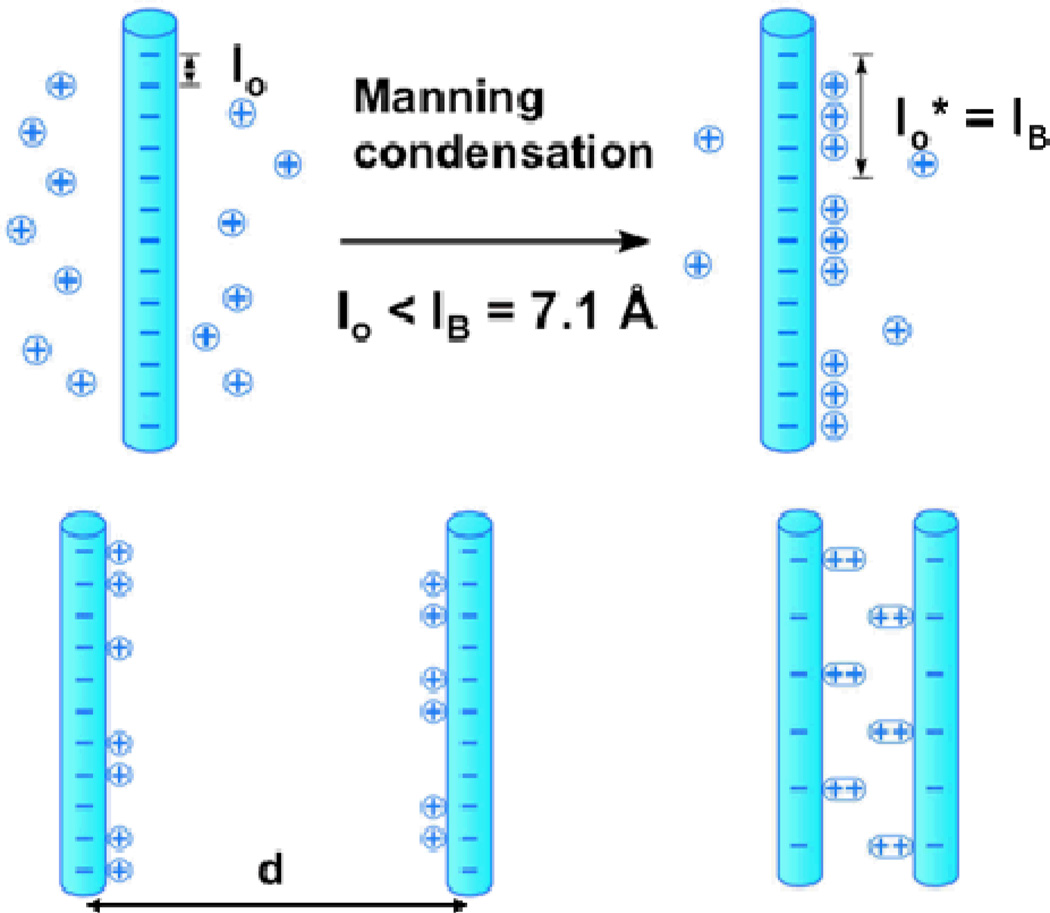Fig. 4.
(Top) Cartoon of univalent counter-ion condensation on oppositely charged rods. In mixtures of univalent and multivalent counterions, the latter replace the former for a gain in entropy (i.e. one multivalent cation (with valence Z) condensing on the backbone would release Z univalent ions back in solution with about the same reduction in the electrostatic energy). (Bottom) Two models of counterion induced bundling of similarly charged polyelectrolytes. In a high temperature model (bottom, left) charge fluctuations on one rod (i.e. producing a spontaneous dipole) induce charge fluctuations in a neighboring rod (i.e. induced dipole) effectively leading to a dipole-dipole attraction. In a different low temperature model (bottom, right) the counterions form a 1D Wigner–like ordering on each rod and the correlation between rods (i.e. sliding to optimally align oppositely charged regions) leads to a very short-range attraction.

